Florentino Perez has invested intelligently to piece together the most well-rounded team in the sport
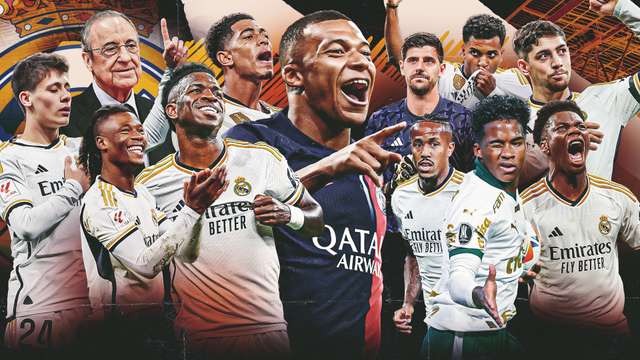
Real Madrid fans used to hate Vinicius Jr. The mercurial Brazilian, now the Ballon d’Or frontrunner and consensus world-class talent, couldn’t stop missing chances. He did all of the right things asked of a modern winger; he beat his man, made dangerous runs, and put in a shift defensively. In terms of effort, there was little more he could have done for the famous white shirt.
But when it came to the crucial bit – putting the ball in the net – he was maddeningly inconsistent. Around that time, in the 2018-19 season, Vinicius began to feel like an expensive mistake, a pricey venture into the emerging South American market that didn’t quite work out.
Now, five years down the line, and a further €800 million (£680m/$870m) later, every skewed opportunity feels like it was worth it. These days, Vinicius is deadly, and the centre-piece of something resembling a juggernaut. What seemed to be a pricey mishap has proven to be the first of a new wave of signings, the maiden investment in turning an ageing squad into Europe’s most talented team.
Madrid have spent big in recent years, but they’ve also spent well, and have set themselves up for both short- and long-term success.

Varying success
Florentino Perez wasn’t always the most intelligent club president during his first spell at the helm. In an effort to grow the Madrid brand as much as improve the footballing product, he proposed the idea of the “Galacticos.” Every summer, he demanded, Madrid must buy the best player in football – regardless of the price. Throw them all together, put trust in a manager, and surely this team could win domestically and in Europe.
And so the big names came in. Madrid broke the world record – then €60m (£54m) – to buy Luis Figo in 2000. Zinedine Zidane arrived a year later, Los Blancos smashing their own mark to the tune of a €78m (£70m) fee. Throw in Ronaldo in 2002, David Beckham in 2003, Michael Owen in 2004, and this looked like a super team.
Except, it didn’t quite work out that way. The Galacticos were good, but perhaps should have won more. Whether it be an imbalanced squad or poor coaching – or both – they weren’t the dominant side Perez envisioned. They went trophy-less from 2003-2006, and Perez resigned from his post in February 2006.
He returned three years later, however, and went big again. Over the next five years, Cristiano Ronaldo, Karim Benzema, Xabi Alonso, James Rodriguez, Gareth Bale and Luka Modric – among others – arrived to be managed by a series of celebrity coaches, notably Jose Mourinho. The big spenders were back.
That nearly 10-year era yielded immense success, both domestically and in Europe. But by 2018, that generation was ageing and had started to grow stale. Something had to change.
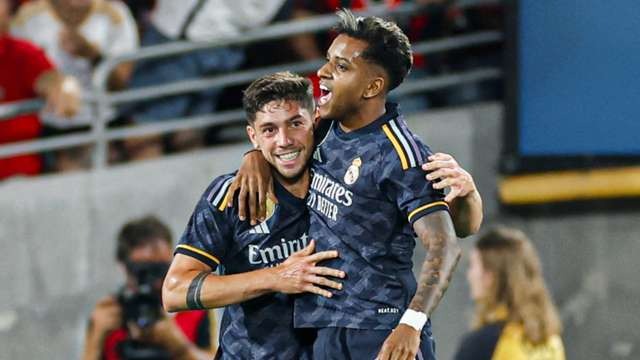
Raiding South America
European football has always shown interest in the South American market. Indeed, Ronaldo, Ronaldinho, Neymar, Lionel Messi and co. all had to come from somewhere. But Madrid, historically at least, had been loathe to venture into it – such was their power on the European stage. Why sign prospects when they could afford the biggest names in Europe whenever they wanted them?
That approach changed with the growing influence of head scout Juni Calafat. The failed footballer-turned-top recruiter had a deep understanding of the global talent pool. Spanish-born but raised in Brazil, Calafat knew that there was talent in the Americas that could be bought, trained and perfected in the Spanish capital. And when Perez famously presented him with the demand to “not let another Neymar slip through the net” after the Brazilian playmaker chose Barcelona over Los Blancos, Calafat went to work.
The next Neymar didn’t exist, so instead Calafat went about signing a slew of South American talents, some cheap, others pricey, to help form the next generation of this Madrid side. Signed in 2018, Federico Valverde was first, brought in from Uruguayan giants Penarol and sent straight into the Madrid youth set up. Then came the more established names: Vinicius, Rodrygo and, most recently, Endrick.
The latter three, all teenagers when their moves were agreed, cost a total €150m – hardly a cheap outlay. Should Endrick follow in the footsteps of his two Brazilian predecessors, that investment might just be worth every penny.
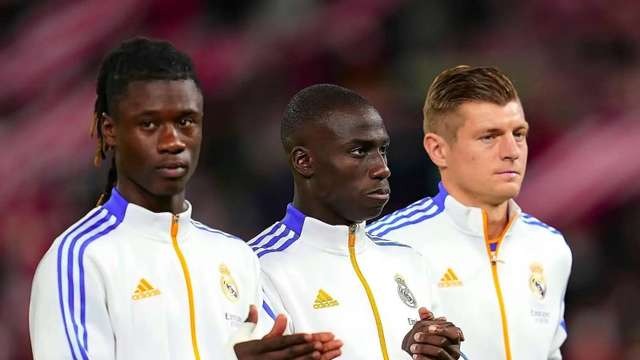
Talent over experience
While Madrid knew there was value in South America, they didn’t ignore what was happening in Europe, and indeed went about investing in young talent closer to home, too.
Eder Militao was the first example, brought in from Porto in 2019 for €50m (£43m/$57m). At the time, the Brazilian wasn’t quite ready for the Madrid first team, and made just 15 La Liga appearances in the 2019-20 campaign. But he worked his way into the side, and was among the best centre-backs in the league for a three year period – before seeing his progress stalled by a torn ACL last August. Ferland Mendy was also brought in for a similar fee, and is starting to show why many believed he could be a long-term replacement for Marcelo.
They did much the same with Eduardo Camavinga. The Rennes midfielder was regarded as one of the top teenage talents in Europe, having bossed Ligue 1 since the age of 16. It was assumed that he would move to a team where he could immediately play, before then seeking a bigger deal down the line, but he instead went to Madrid for €40m (£34m/$47m) in August 2021 in the knowledge that Los Blancos wouldn’t be able to guarantee him a starting spot. Camavinga accepted a bench role, and has since grown into a regular starter with the departure of Casemiro and the impending retirement of Toni Kroos.
Madrid took a similar approach with Aurelien Tchouameni. More expensive, and not quite as immediately effective as his compatriot, the former Monaco man seemed primed to be an outright replacement for Casemiro. Although he hasn’t quite hit his best for Los Blancos, manager Carlo Ancelotti managed to adapt without him in the XI in 2022-23 before bringing the best out of him over the course of the most recent campaign.
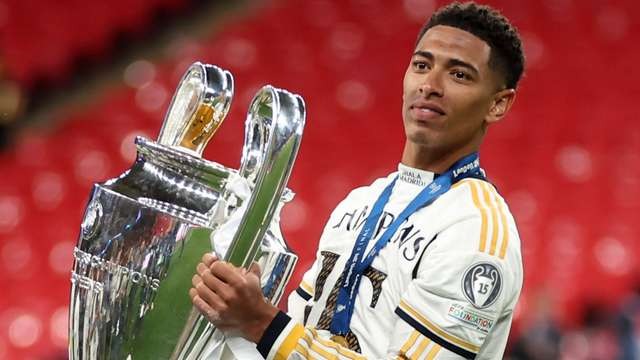
Still dealing in superstars
There have, of course, still been the big-money ventures – the superstars. This is Real Madrid we are talking about, after all.
Thibaut Courtois rather forced Chelsea’s hand with a late transfer request after Madrid came calling in 2018, but still cost €39m (£35m/$48m). He has since developed into one of the best shot-stoppers in the world, with another impressive Champions League final performance only reinforcing his claim as being among the game’s best.
Jude Bellingham, meanwhile, arrived In typical Madrid style, as his arrival was steadily orchestrated for months. Publicly, it seemed that the midfielder was torn between Liverpool and Madrid, but behind closed doors, Los Blancos had already put the work in to make things happen. They flattered Bellingham with meetings from Zidane, and laid out a vision in which he could become a crucial part of the emerging project – a modern Galactico. Ten months after he first donned a Madrid shirt, the initial €103m fee looks like a bargain.
And now, Kylian Mbappe is arriving. Technically, Los Blancos haven’t sent a penny to Paris Saint-Germain for his signature, but they have still invested heavily to get Mbappe to the Bernabeu. His salary is comfortably the highest at the club, while Madrid have committed to a gaudy €130m signing bonus – spread out over the course of his contract – to secure the world’s best forward. There are vague concerns about his tactical fit into the side, but this is a player who Madrid couldn’t afford to let slip.

Rare misses
It hasn’t all been perfect. Indeed, Madrid have misfired here and there, throwing away well over €200m on signings who didn’t work out.
Eden Hazard was the highest-profile mishap. The Belgian forced his way out of Chelsea in 2019, and Madrid showed little hesitation in smashing their own transfer record to bring him in – the perfect attacking answer to the departure of Ronaldo and decline of Bale. But it went all wrong. Hazard showed up to his first training camp overweight, and after a litany of injuries, public disagreements with the manager, and reported attitude problems, he retired from football just three years later – with little fanfare.
Less expensive but perhaps more embarrassing was the signature of Luka Jovic for an eye-watering €60m. Purchased in 2019 on the back of an immensely successful campaign with Eintracht Frankfurt, the Serbia striker never made an impact at Madrid, and left for Fiorentina on a free transfer in 2022. Still, these have been rare mistakes in an otherwise impressive run of big-money moves by Madrid.
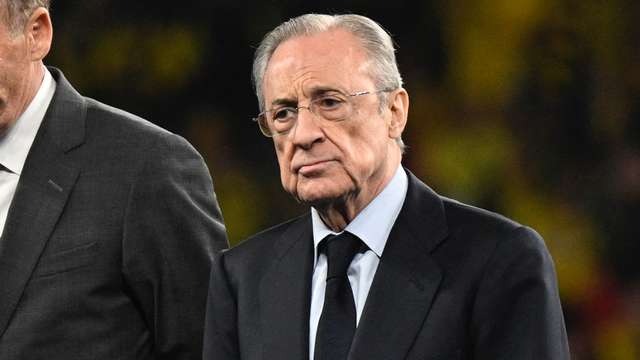
Process never stops
Madrid, then, appear to have set themselves up nicely for the future. ‘Turkish Messi’ Arda Guler arrived last summer to further reinforce the attacking corps shout they need any more help in that area, but this looks a mostly set squad. The key outfield players are all 25 or under, though Mbappe and Valverde will turn 26 before the year is out.
There is, though, still some refreshing to do. Dani Carvajal, at 32, isn’t getting any younger. Meanwhile, there could be some reinforcements needed at centre-back and perhaps even left-back. Still, given the quality of the side, and smarts in the transfer market, Los Blancos would be a safe bet to continue to build.
The arrival of Mbappe doesn’t seem to likely to signal a chance in Madrid’s transfer strategy, either. They may have gone back to the Galactico model of signing the best player in the world this summer, but their other transfer targets are more in-keeping with their successful process of the past six years. Bayern Munich left-back Alphonso Davies, 23, is high on their wishlist, while they are also actively pursuing Lille’s teenage centre-back Leny Yoro and River Plate’s 16-year-old midfielder Franco Mastantuono
As we wait to see what happens next, it’s clear that at the second time of asking, Perez has yet again spent big, but this time he has also spent smart. In doing so, he has built what is quite comfortably the most talented squad in world football with no obvious flaws. A new dynasty could well be upon us in Madrid.
